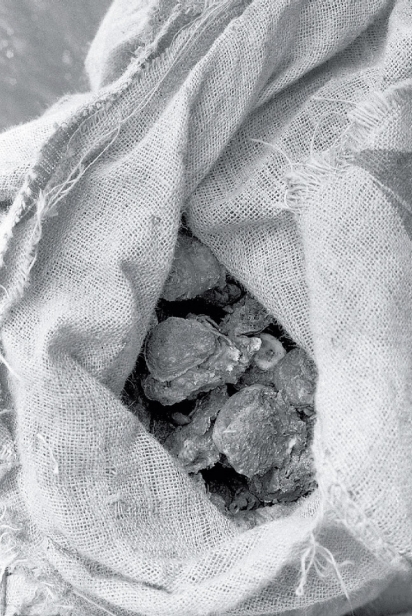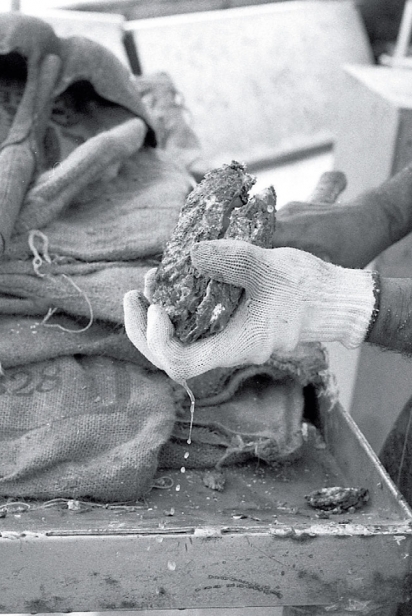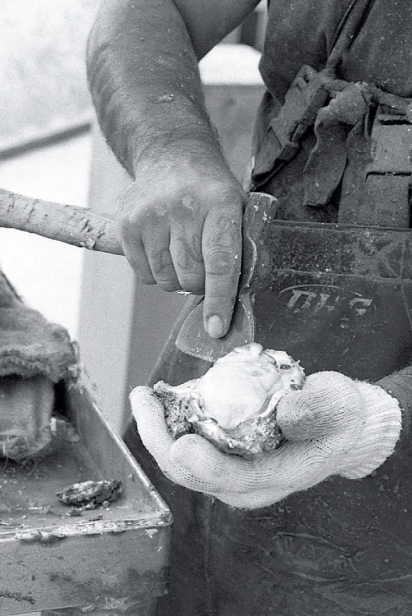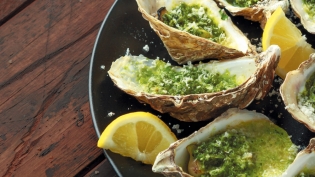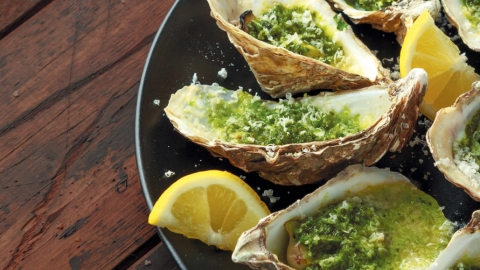Sustainability on the Half Shell - Eat Oysters and Save the Bay!
Bringing Gulf Oysters to Our Plates While Restoring the Bay
On the day I visited Prestige Oysters in San Leon in late September, one week had passed since Tropical Depression Imelda dumped 40 inches of rain on parts of Southeast Texas.
It wasn’t clear yet how the influx of fresh water into Galveston Bay would affect its oysters, but Lisa Halili, who started Prestige Oysters with her husband, Johnny, was watching.
An ideal oyster season needs some cold weather to help suck fresh water out of the bay. When the tides come back, the result is a good mixture of Gulf and fresh water that allows oysters to fatten up and get salty. Too much fresh water can lead the salinity of the bay to drop too low, causing oysters, which thrive in brackish or saltwater, to die.
“We’re knocking on wood that that doesn’t happen,” said Lisa Halili. “We were just coming back from Harvey and now the bay looks like a chocolate bar.”
Imelda was just the latest in a string of stressors that the Gulf oyster population and industry have had to contend with in the past decade or so. Hurricanes, droughts, floods and the Deepwater Horizon oil spill have all taken a toll. But through it all, Prestige Oysters has stayed as deeply committed to sourcing fresh, high-quality oysters as it has to harvesting them sustainably and restoring their ecosystem.
The story of Prestige Oysters started with one boat. After years of working as a deckhand in Louisiana, Johnny Halili, an Albanian immigrant who arrived in the U.S. in the ’70s, bought his first boat, the Lady Katherine. Lisa joined him as his deckhand and the couple spent years oyster fishing and shrimping, slowly growing the company. Today, Prestige Oysters is one of the leading oyster distributors and processors in the nation with the Halilis and their son, Raz, at the helm.
The company has two processing plants and several dock operations and relies on some 100 independent fishermen to harvest its oysters from public areas and private beds. The Halilis take pride in caring for the people they work with. Many of the fishermen they work with have become like family; some grew up or went to high school with Raz.
“We want independent fishermen to know that when they sell us their product, we’re going to do our very best to market it, we’re going to try our best to get them a good, marketable price and they’re going to get paid for it,” said Lisa.
Since Prestige is a wholesale distributor, it doesn’t sell its oysters directly to restaurants. However, you can get a taste of their oysters at Houston establishments like Caracol, State of Grace and La Lucha. While bringing these briny, exquisite creatures to restaurant menus and to our plates is the company’s business, keeping the oyster reefs and the bay healthy is also a priority.
“Oysters are so important to our environment. If you don’t have the oyster, you’re not going to have a healthy ecosystem,” said Lisa.
The oyster is a keystone species, meaning that other species in the ecosystem largely depend on it. Oysters act as a natural filtration system. Each little oyster can filter up to 50 gallons of water per day, ridding it of sediment and other materials, which in turn improves water quality. In addition, oyster reefs provide an essential habitat for other fish species and protect the shoreline from wave energy that could lead to erosion and property damage.
For oysters to thrive, they need a good substrate to catch onto and grow. Gulf oysters spawn during warm weather in late spring to early fall. Fertilized eggs turn into larval oysters, which swim and eventually settle on the bottom, cementing themselves to a surface. Larvae that settle on a surface are called spat, and it takes 18 to 36 months for them to grow into an oyster. In Texas, oysters must be at least three inches to be harvested.
Oyster shells, empty or occupied, provide the most abundant, naturally available settling material for the oyster larvae. Prestige recycles 100% of the oyster shells it processes, returning them to the bay. The Halilis have also invested millions of dollars laying Kentucky limestone on private oyster beds to build new reefs.
“We’re probably one of the largest restorationists, for a private company, that has placed limestone out on private oyster beds like we’ve done,” said Lisa. “By us putting the rock down, that’s spawning the whole entire bay. There’s new material for them to catch onto.”
Prestige also works to raise awareness about Gulf oysters and their ecosystem among consumers. The company is currently undergoing an assessment for the Marine Stewardship Council (MSC) certification, a label that recognizes sustainable fishing practices. If earned, Prestige Oysters would become the first oyster fishery in the Americas to receive the MSC certification.
“It would be a testament to our company that we are making strides to harvest oysters in a sustainable manner, and with everything going on in our world today I think it’s very important that, whatever industry you’re in, you’re looking to be sustainable in whatever way possible,” said Raz.
The family is also involved with the San Leon Oyster Festival, which takes place each April, at the end of the public oyster season, which starts in November. The festival, which this year drew 3,000 visitors, seeks to raise awareness about oysters and their ecosystem and raise funds to help reef restoration.
At press time, it was still too early to tell what this oyster season might bring. The Halilis hadn’t been able to assess the fresh water impact of Imelda, but they remained optimistic that this season, like the last, would be a good one. Lisa and Raz both told me that being in the oyster business requires patience and an understanding that as partners with Mother Nature, there will be good years and there will be bad years.
Oysters are resilient creatures. They’re able to shut themselves closed for periods of time to avoid taking in too much fresh water. And the Halilis as fishermen are resilient, too. Their passion for the business, the people they work with, the environment and the oyster keeps them going.
“It’s a risky business, but it’s just a way of life. This is what we do and I find great pride in being able to put oysters on plates for people to enjoy,” said Raz. “Oyster eating is a way of life. We want to continue that and make sure that when my kids and their kids come along, there are oysters there for them.”



